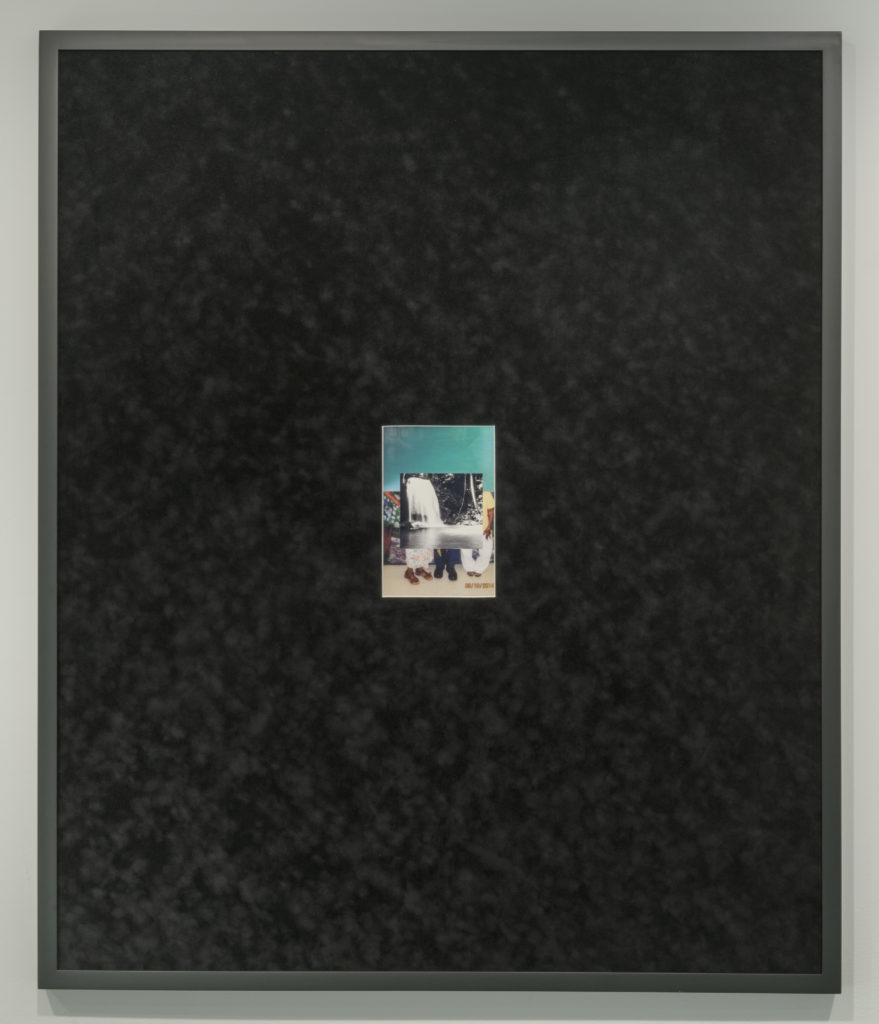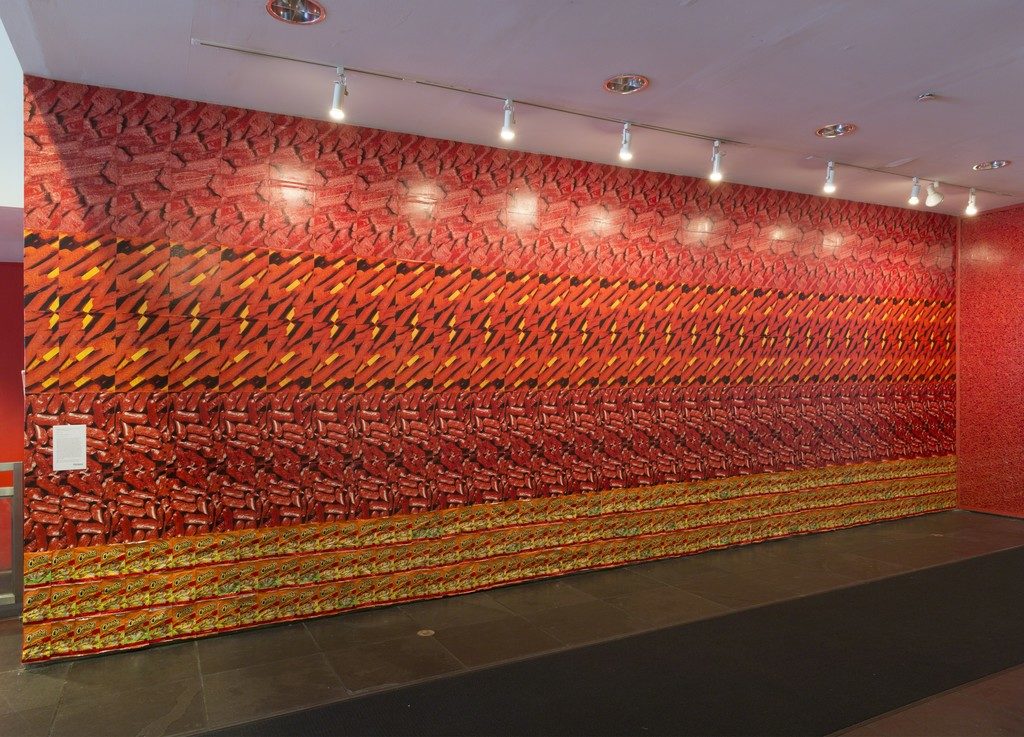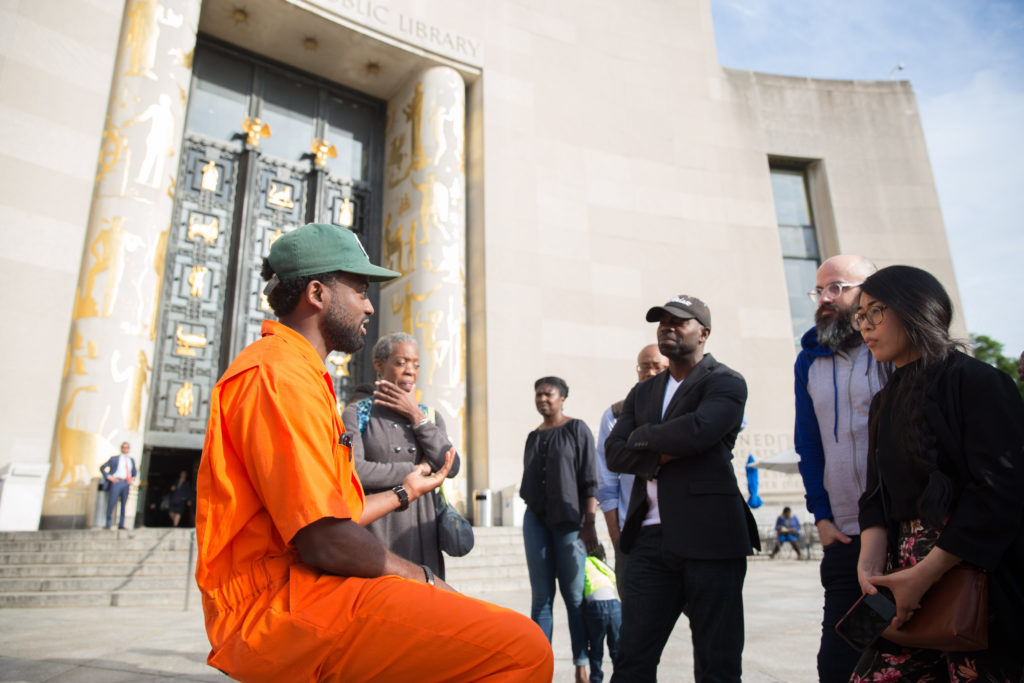Food culture, the prison state, and alchemy are among the many themes taken up in the Fictions group exhibition. Running from September 14 to January 7 at New York’s Studio Museum, the fifth show in the F series brings together the work of 19 emerging artists of African descent living and working across the United States. Each exhibition attempts to mark and support a new cohort of artists, where recent iterations of the program have also established thematic concerns intended to bring together materially, methodologically, and conceptually divergent practices. In Fictions, however, the curatorial thrust towards thematization has the effect of obscuring important specificities within the works, rather than enhancing them.

According to curators, Connie H. Choi and Hallie Ringle, the artists share an affinity for the use of ‘narrative content.’ The rather elusive didactics elaborate on their multiplicity of strategies – from constructing their own truths and mythologies, to witnessing lived experiences through their practices – as means to “investigate the complexities of the contemporary moment.” However, the vague curatorial conceit of Fictions seems more to hold a mirror to this moment than to point to moments of cohesion in the artists’ practices. Its title evokes the reactive relationship between current events and how they’re represented in the media, which has become a troubling and seemingly inseparable cycle of acts of violence and inflammatory falsehoods presented as truth.
A site-specific mixed media installation in the museum foyer opens the show. Spanning an entire wall, Jazmin Urrea’s ‘Red40’ is a photo collage of processed foods dyed with the chemical coloring of the same name, derived from coal tars. Bags of spicy cheese snacks Flamin’ Hot Cheetos and extreme close-up pictures of crimson Jabalina, Dedos and Rellerindos candies, are abject in their scale repetition, while the adjacent wall is encrusted, floor-to-ceiling with the actual edible Cheetos chips behind a sheet of perspex. Urrea’s use of junk foods — united both by their shared chemical makeup of a harmful dye and their widespread availability in Los Angeles’s immigrant communities — gestures towards the lack of access to healthier alternatives in many low-income neighborhoods.

Food as a site through which to probe social issues relating directly to the structurally oppressive entanglements of class and race is taken up again in an uncanny stop motion video by Stephanie Williams. ‘PINOY/PLOY’ looks at the fetishization of the cuisines of marginalized communities as they are assimilated, often as stereotypes, by a dominant Euro-American food culture. In this video, Balut — fertilized duck eggs that are a sought-after dish in the Philipines — enter into a macabre performance with Aunt Jemima’s Maple syrup and Uncle Ben’s rice, both products employing harmful caricatures of Black Americans in their branding.
The United States prison-industrial complex is another major thematic touchstone in Fictions. ‘7666 Days’ and ‘7666 Nights–Falling,’ a mournful pair of photographs by Sable Elyse Smith, work to convey the affective trauma of families caught up in the carceral system. Set against an expanse of a textured black suede backdrop that all but swallows up the comparatively diminutive images, which layer and formally confuse polaroid snapshots taken by relations in prison visitation rooms with the schlocky tropical murals that often serve as decor in these highly-regulated social spaces.

Subjectivity as formed and altered through experiences with incarceration is the direct material of ‘The Jumpsuit Project,’ a series of performances by Sherrill Roland, who was wrongfully imprisoned for 19 months, while enrolled in graduate school. Following his release, the artist staged daily actions on campus. Wearing the archetypal orange jumpsuit of the modern inmate, Roland set up in public areas, sharing his story with passersby and community members. Here, represented as photographic documentation and ephemera — a stool placed on the floor, the hanging coveralls — the ongoing project challenges viewers’ accepted narratives about who is imprisoned and why. In contrast to the melancholy of Smith’s photographs, Roland’s embodied performances are, for the artist, redemptive.
Amongst the many sculptural objects and installations included in Fictions, works by Michael Demps and Nikita Gale stand out. A body-felt low hum emanates from Demps’s alchemically-inspired sculpture, ‘Untitled, Dehiscent Echo,’ while contact mics reproduce the ambient sounds of the gallery. Two guitars bound to a chrome shelving-unit support structure in Gales’ ‘BIG BAD PICKUP’ cannot be played in a traditional sense but are rigged to periodically emit abrasive feedback. Both artists take less didactic approaches to their subjects, while harnessing phenomenological relations to sound through its potentiality and absences.

Figurative painting is given plenty of air time in the exhibition, too, the most compelling examples of which are installed in counter-relation to one another. If there is a smoothness of circulation to the scrumptiously erotic entanglement of female figures pressing against the structural limitations of the canvas in Christina Quarles’ painting ‘A Part Apart (Fade)’, Walter Price’s ‘Extra Virgin Olive Oil,’ offers a similarly effusive figuration. Formally and compositionally muddier, the bodies in Price’s painting are also held in an energetic tension with the boundaries of the picture plane.
Sixteen years ago, then-curator and now-director of the Studio Museum, Thelma Golden wrote in the catalogue essay for its first emerging artist exhibition, Freestyle, that there were no prevailing themes in the show, “except perhaps an overwhelming sense of individuality.” With Fictions, Choi and Ringle have put a finer point on establishing thematic links between the artistic practices represented, perhaps to the show’s detriment. This strategy does more to reveal developments in curatorial thought and practice than it does to connections between the works in Fictions. But if the ultimate goal of the F series is to provide institutional support — a platform for artists’ in the early stages of their careers to be exhibited, and thus heard and considered seriously — then perhaps the curators’ emphasis on a framing of the works through the conceit of narrative is best understood as a mode attending to these practices. And doing so by working within the constraints of institutional legibility where the thematic group exhibition remains the idealized standard.**













